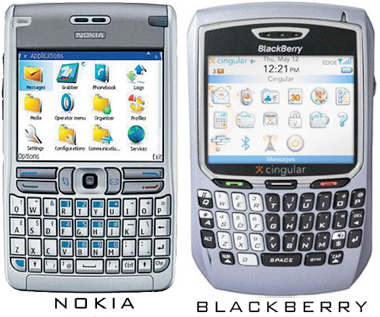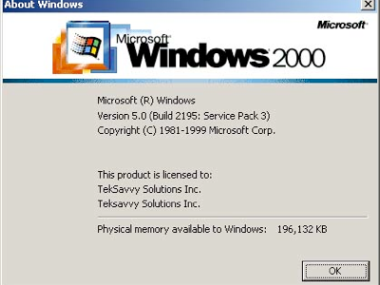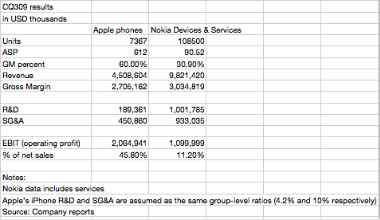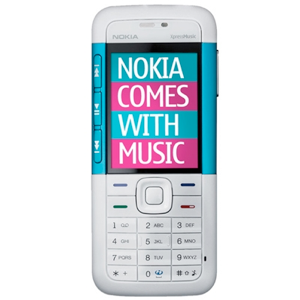In other news:
- Nokia shutters flagship Regent Street store in face of Apple retail’s domination – December 08, 2009
- Nokia sees flat market share as Apple gains – December 02, 2009
- Nokia Chief Strategist: Apple will remain a niche player in smartphones, just like in computers – November 30, 2009
- Nokia to cut another 330 R&D jobs – November 20, 2009
- To understand market share vs. profits, look no further than Nokia vs. Apple – November 11, 2009
- How Apple passed Nokia to become the world’s most profitable handset vendor – November 11, 2009
- Strategy Analytics: Apple passes Nokia to become world’s most profitable handset vendor – November 10, 2009
- Nokia sues Apple claiming iPhone infringement of Nokia GSM, UMTS and WLAN patents – October 22, 2009
- Nokia posts loss of 559 million euros on weaker smartphone sales – October 15, 2009
- Nokia’s earnings plummet 66 percent – July 17, 2009
- Jim Cramer: The problem with Dell and Nokia is that no one wants their products; Buy Apple – July 17, 2009
- Nokia’s failures vs. Apple’s vibrant iPhone platform puts market share at risk – June 24, 2009
- Nokia Ovi Store launch a complete disaster – May 26, 2009
- Nokia ships 19% fewer phones in Q1, bleeds more share – April 16, 2009
- Nokia axes 1700 jobs worldwide – March 17, 2009
- Nokia halts sale of iPhone killer; 5800 handset plagued with major problems – March 02, 2009
- Nokia hops on bandwagon, unveils knockoffs of Apple’s iTunes Store, App Store – February 16, 2009
- Nokia profit collapses 69% in fourth quarter 2008 – January 22, 2009
- Nokia’s profits plummet 30 percent – October 16, 2008
- Nokia’s fatally flawed ‘Comes With Music’ service no Apple ‘iTunes Store killer’ – October 03, 2008
- Nokia fumbles iPhone lookalike-not-workalike launch in U.S. and Europe – October 02, 2008
- Nokia sputters that iPhone ‘not worthy of discussion’ – August 13, 2008
- Apple takes top spot from Nokia on AMR Research’s 2008 Supply Chain Top 25 list – May 30, 2008
- Nokia shares slammed in wake of miss; Nokia CEO calls Apple iPhone ‘niche product’ – April 17, 2008
- The knockoff parade continues: Nokia exec shows Apple iPhone lookalike ‘Tube’; dismisses Apple – April 08, 2008
- Nokia previews blatant Apple iPhone knock-off (with video) – August 29, 2007
- Nokia CEO challenges Apple over iPhone – February 13, 2007









